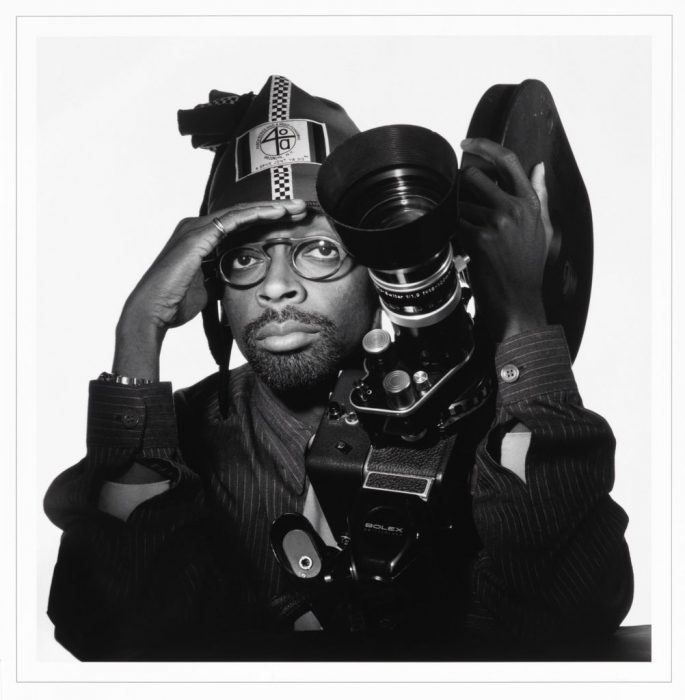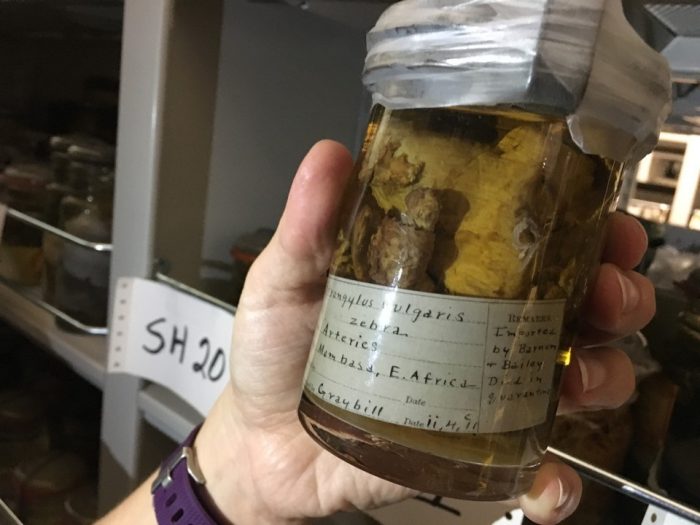ICYMI: Highlights from the week that was Nov. 5 – Nov. 11, 2017
No one can keep up with everything, so let us do it for you. We’ll gather the top Smithsonian stories from across the country and around the world each week so you’ll never be at a loss for conversation around the water cooler.
The Smithsonian’s collections were in the news this week: Recent acquisitions, commissioned artworks and jars full of old tapeworms.
Answer Man reconstructs the history of two very cool 19th-century Mall buildings
The Washington Post, Nov. 4
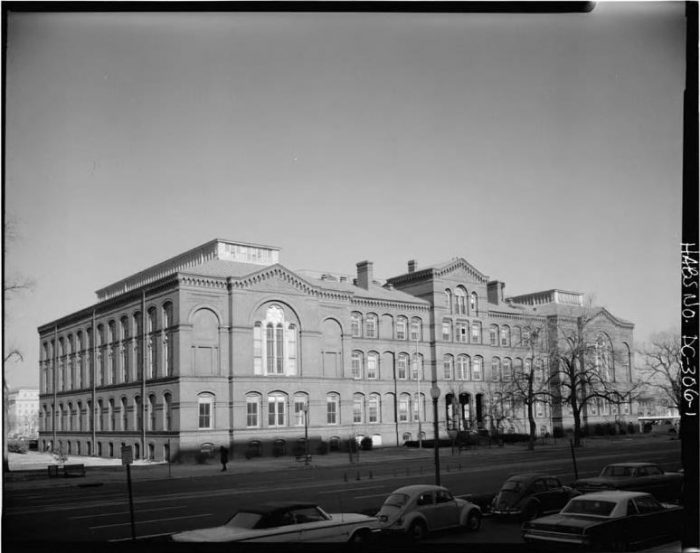
Until the 1960s, this building on the Mall housed the Army Medical Museum. It was designed by Adolph Cluss and razed in 1969 to make way for the Hirshhorn Museum. (Library of Congress)
I found a great photograph of the east end of the Mall, dated 1962. I love the rockets displayed outside the Arts and Industries Building, since the Air and Space museum had yet to be built. But I wonder: What was the red-brick building shown where the Hirshhorn Museum now stands? And what was the two-story, tan brick building with the red roof standing in the middle of what became Air and Space? Read John Kelly’s answer for the Washington Post’s Answer Man.
Lin-Manuel Miranda’s Hamilton Costume and Documentary Donated to Smithsonian Museum
Also, watch a sneak peek of Sharing Our Stories: The Eliza Project, a documentary directed by Hamilton cast member Morgan Marcell.
Playbill, Nov. 7
An 18th century-style green silk suit worn by Tony and Pulitzer Prize winner Lin-Manuel Miranda in the Broadway production of Hamilton was donated to the national collection of the Smithsonian National Museum of American History November 6.
In addition to Miranda’s costume (designed by Tony Award winner Paul Tazewell), the Smithsonian received a mid-19th-century oil painting of Elizabeth (Eliza) Schuyler Hamilton by Daniel P. Huntington.
Miranda’s costume will go on view March 22, 2018, in the Smithsonian’s Giving in America exhibition, which will be updated to tell the story of philanthropy and the arts. It will later join the theatre collection in the Division of Culture and the Arts. Eliza’s portrait will join the National Museum of American History’s new philanthropy collection. Read more from Adam Hetrick for Playbill.
Tiger Cub Rescued At U.S./Mexico Border Loves Playing With Adopted Brother
CBS New York, Nov. 6
After being rescued by officials at the U.S./Mexico border back in August, this three-month-old endangered Bengal tiger cub is now doing great at his new home at the San Diego Zoo.
A four-month-old critically endangered Sumatran tiger is his new adopted sibling, who traveled from Washington D.C.’s Smithsonian National Zoo to California to be his playmate – the duo plays together and both act just like brothers, according to the zoo.
From Ben Carson to Ana Mendieta, See the Newest Faces Inducted Into the National Portrait Gallery
The Smithsonian museum has acquired 27 new portraits
ArtNet, Nov. 7
Designer Ralph Lauren, neurosurgeon-turned-politician Ben Carson, artist Ana Mendieta, director Spike Lee, and Francis Scott Key, who penned the lyrics for the “Star-Spangled Banner,” are all subjects in the latest crop of portraits to enter the Smithsonian’s National Portrait Gallery. The works will go on view November 17 as part of its annual “Recent Acquisitions” exhibition.
“We are always looking for subjects whose accomplishments are national and significant,” chief curator Brandon Fortune told artnet News. “So while our collection is comprised of portraits of nationally significant figures who have had an impact on our history and also the present day, we’re also looking for really fascinating works of art.” Read more from Hannah Pikaart for ArtNet.
Artist Mark Bradford explains his Hirshhorn remix of a Civil War painting
The Washington Post, Nov. 7
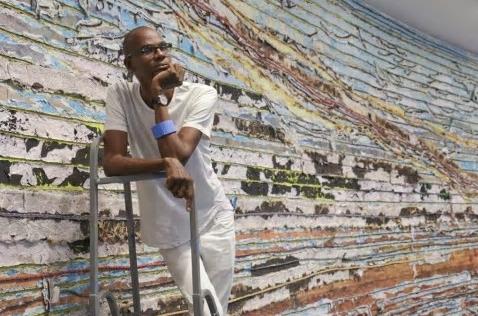
Mark Bradford has created a huge collage that covers an entire circular wall at the Hirshhorn (Credit: Cathy Carver)
Abstract artist Mark Bradford may be a little bit clairvoyant. In 2015, when the Hirshhorn asked him to create a site-specific installation in the museum’s third-floor gallery, Bradford proposed creating his own version of a huge, circular painting that stands at the Gettysburg National Military Park. That was long before the current nationwide debate over Confederate monuments, and the Gettysburg painting wasn’t really on anyone’s mind, Bradford recalls. Created by French painter Paul Philippoteaux, the 1883 cyclorama aimed to give viewers an objective, immersive view of the Battle of Gettysburg by depicting its climactic assault, Pickett’s Charge. Bradford’s “Pickett’s Charge,” which goes on view tomorrow, uses a reproduction of Philippoteaux’s painting to create a collage that questions the very possibility of having an omniscient, objective perspective on that — or any — historical event. Read Sadie Dingfelder’s interview with Bradford for the Washington Post’s Express.
Washington, D.C., Is Home to America’s Largest Collection of Parasites
Visiting it is like going to a really macabre candy store—except instead of sweets, there are tapeworms
The Atlantic, Nov. 8
Anna Phillips is delighted because I’ve just found her favorite parasite, which she had misplaced a year ago.
We are walking through what, at first glance, could be mistaken for an oddly macabre Italian deli. The shelves around us are full of chaotically arrayed jars, which contain what look like formless bits of meat and coiled balls of pasta. But this is actually part of the largest collection of parasites in the country, and on closer inspection, a bundle of tagliatelle is actually a tapeworm. A tangle of capellini is actually a cluster of nematodes. “You can make a lot of food references,” says Phillips. “I try to avoid that, because it ruins food for people.”
But there’s one jar that Phillips is especially keen to find, and after 20 minutes of sweeping the dimly lit shelves with the light of our phones, I spot it. It seems to contain nothing more than a lump of grisly, amorphous tissue, preserved in yellow liquid. But its label, in just a few terse and unconnected words, tells a rich story. Read more from Ed Yong for the Atlantic.
Painting the powerful: Artists share process of capturing presidential couples on canvas
ABC News, Nov. 9
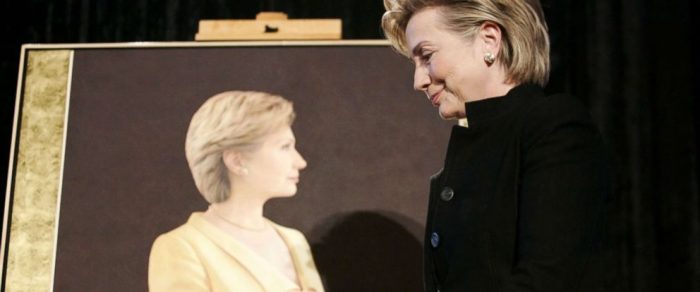
Sen. Hillary Rodham Clinton prepares to deliver remarks after her portrait was presented, April 24, 2006, at the Smithsonian Castle Building in Washington. Hillary and her husband former President Bill Clinton attended a ceremony for the presentation of their portraits. (Haraz N. Ghanbari/AP)
It was May of 1998 and artist Ginny Stanford was at the White House meeting then-first lady Hillary Clinton for the first time.
“I think the thing that struck me most about that meeting was how beautiful she was in person,” Stanford told ABC News in an interview.
Stanford had been chosen to paint Clinton’s portrait for the National Gallery Museum – the first time the museum commissioned a portrait of a first lady.
“There was so much warmth and humor that I sensed from her in person, and she hadn’t been portrayed like that in public,” Stanford said. “I felt really excited about the possibility about portraying this side of her.”
Clinton’s image is easily recognizable, seen everywhere, photographed multiple times – so how does one reveal a side the public hasn’t seen? How does one gain the subject’s trust so they relax, especially someone as guarded as Hillary Clinton? Read more from Veronica Stracqualursi for ABC News.
Armory Show director pushed out after sexual harassment allegations
The Washington Post, Nov. 8
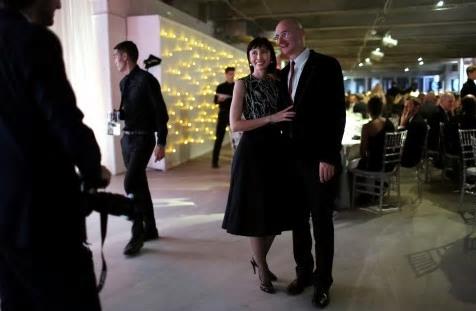
Melissa Chiu, director of the Hirshhorn Museum, and her husband, Ben Genocchio, who has been accused of sexual harassment. (Yana Paskova for The Washington Post)
Benjamin Genocchio, executive director of New York’s prestigious Armory Show and half of an art world power couple with Washington museum director Melissa Chiu, was pushed out Wednesday only hours after a New York Times report detailing sexual harassment allegations against him.
Genocchio is the latest high-profile figure to be accused of sexual harassment in the wake of accusations made against film producer Harvey Weinstein, actor Kevin Spacey and NPR’s head of news, Michael Oreskes. Read more from Geoff Edgers and Peggy McGlone for The Washington Post.
Posted: 21 November 2017


